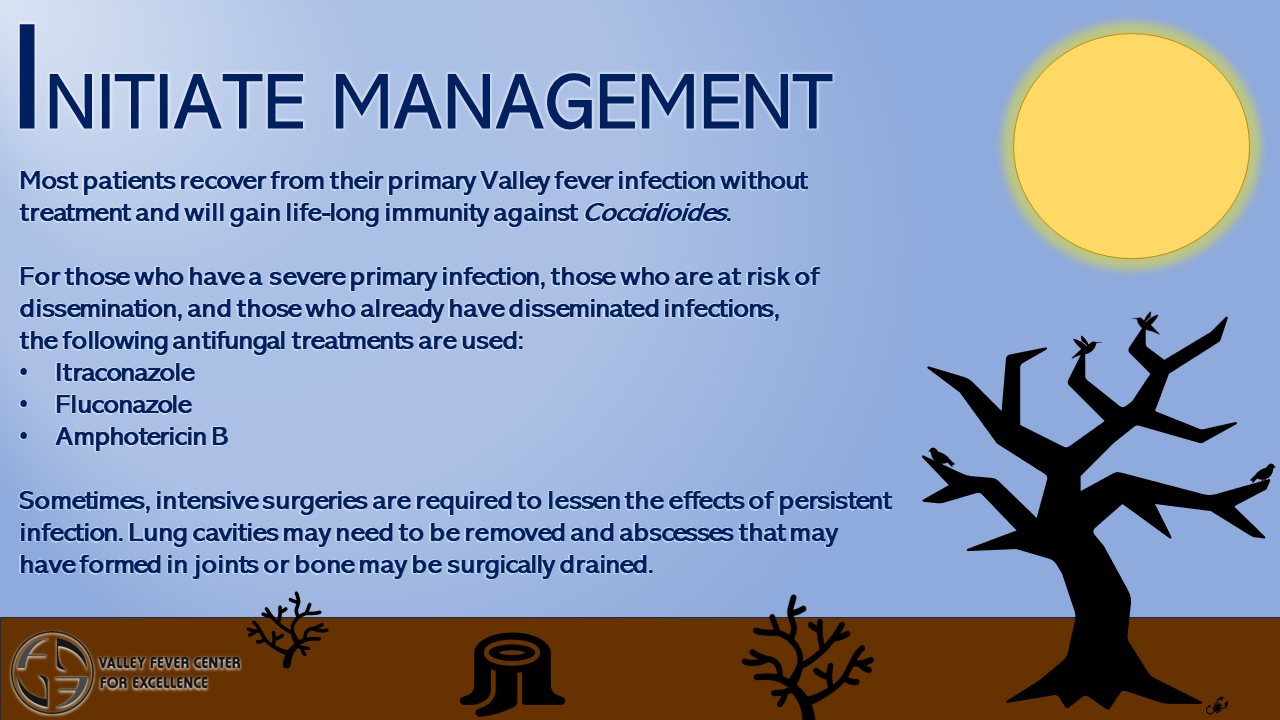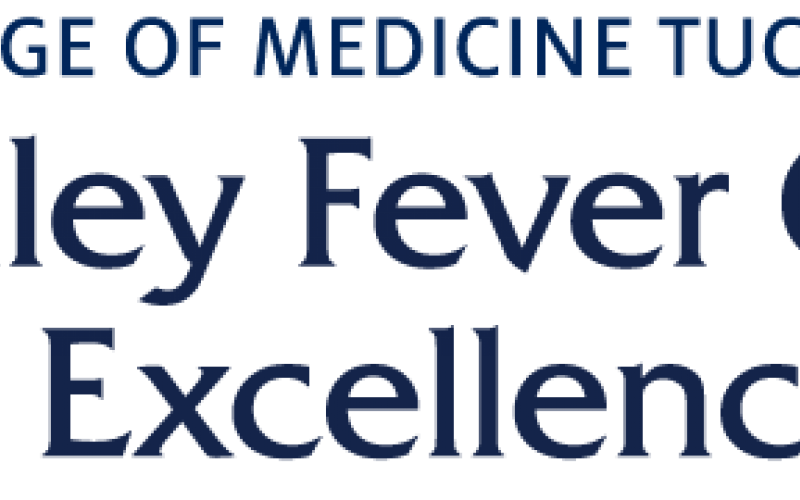
Most patients with Valley Fever recover with no treatment and will have life-long immunity.
In severe cases, especially in those patients with rapid and extensive primary illness, those who are at risk for dissemination of disease, and those who have disseminated disease, antifungal drug therapy is used.
The type of medication used and the duration of drug therapy is determined by the severity of disease and response to the therapy.
Medications used in chronic, mild-to-moderate disease:
- Ketoconazole
- Itraconazole
- Fluconazole.
For rapidly progressive disease, amphotericin B is given intravenously or inserted into the spinal fluid.
Although these treatments are often helpful, evidence of disease may persist and years of treatment may be required.
In patients with serious complications from the disease and those with immuno-suppression (including AIDS and organ transplants), diagnosis and treatment are often complicated and expensive and current therapy is sometimes inadequate to cure patients.
Surgical removal of cavities in the lung is sometimes necessary.
Surgical drainage of Valley Fever abscesses in bones or joints is also commonly performed.
Alternative Treatments
Much attention has been focused on the use of herbs, vitamins, sulfur and other non-pharmaceutical treatments, but there is no scientific evidence to support the use of alternative treatments.
Nikkomycin Z is an experimental antifungal drug currently in clinical trials.
Results with nikkomycin Z to treat experimental infections raises the possibility that it might be curative.


